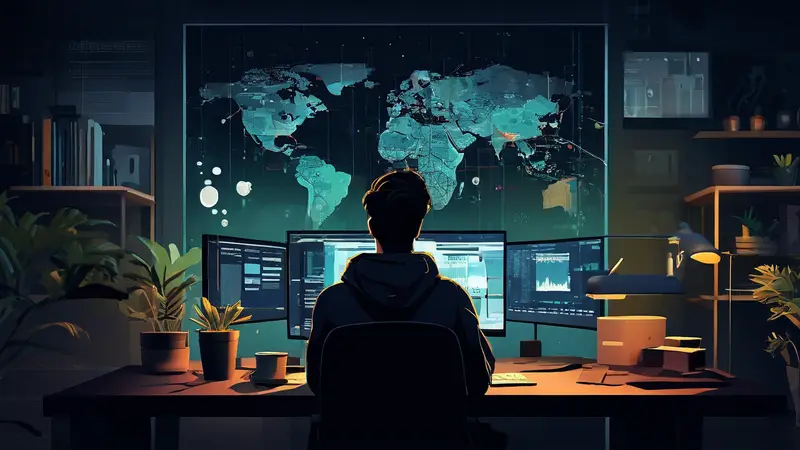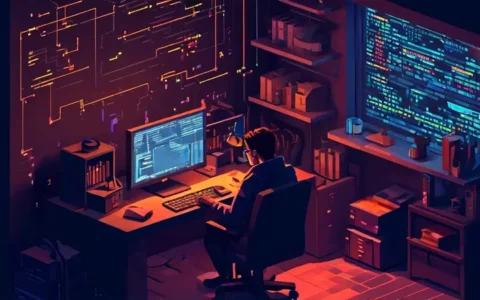
ABSTRACT
Children's programming software typically includes platforms like 1、Scratch, 2、Tynker, and 3、Blockly. These tools offer a visual programming environment specifically designed for young learners to grasp the fundamentals of coding through interactive projects and games. Scratch, developed by MIT, enables kids to create stories, games, and animations using drag-and-drop coding blocks, making programming accessible without the need to memorize syntax.
INTRODUCTION TO CHILDREN'S CODING SOFTWARE
UNDERSTANDING THE CONCEPT
Children's programming is an educational approach aimed at teaching programming concepts to young learners. The software designed for this purpose needs to be intuitive, engaging, and age-appropriate. It emphasizes the principles of computer science while avoiding the complexities of traditional text-based coding languages.
FEATURES OF CHILDREN’S CODING SOFTWARE
VISUAL INTERFACE AND INTERACTIVITY
The visual interface is one of the most striking features of such software, using colorful blocks or similar elements to represent code. This feature allows children to understand programming logic and structures visually, which is instrumental in maintaining their interest and facilitating their learning process.
GAMIFICATION ELEMENTS
The use of game-like elements plays a significant role in these applications. These elements make the learning experience fun and encourage continual engagement, which can help kids to learn coding concepts without feeling overwhelmed or bored.
EDUCATIONAL VALUE
Beyond fun, the core aim is to impart valuable skills and knowledge. The software often includes structured lessons, projects, or challenges that teach various aspects of coding, problem-solving, and critical thinking.
EASE OF USE
These applications are designed with child-friendly interfaces, ensuring that children can navigate and use the software independently or with minimal guidance. Simplicity and ease of use are crucial to prevent early frustration during the learning process.
COMMUNITY AND SHARING
Many platforms include community features, allowing users to share their creations, collaborate on projects, and learn from one another. It fosters a sense of accomplishment and belonging, which is vital in keeping young learners motivated and invested in their coding journey.
POPULAR PROGRAMMING SOFTWARE FOR KIDS
SCRATCH
Developed by the MIT Media Lab, Scratch stands out as a pioneering platform where children can program their own interactive media. Its strength lies in its community and the vast array of shared projects, offering endless learning opportunities and inspiration.
TYNKER
Tynker provides a versatile platform with a multitude of courses and activities catering to varying age groups and interests. It progresses from block-based coding to actual coding languages, offering a clear growth path for students.
BLOCKLY
Google's Blockly introduces kids to coding with a block-based approach similar to that used in Scratch, emphasizing problem-solving and logical thinking skills. It acts as a stepping-stone towards text-based programming.
BENEFITS OF USING PROGRAMMING SOFTWARE FOR KIDS
SKILLS DEVELOPMENT
The use of these platforms aids in the development of skills such as creativity, computational thinking, and problem-solving. The hands-on nature of the software promotes active learning, which can be more effective than passive educational methods.
PREPARATION FOR THE FUTURE
In our technology-driven world, basic coding knowledge is becoming increasingly important. Early exposure to programming concepts prepares children for the digital age and can spark an interest in careers in science, technology, engineering, and mathematics (STEM).
INCLUSIVE LEARNING
The software often features support for multiple languages and adapts to different learning styles, making coding education more inclusive. By providing real-time feedback and rewards, these tools cater to a broad demographic of young learners.
CHALLENGES AND SOLUTIONS IN CHILDREN'S PROGRAMMING
NAVIGATING THE LEARNING CURVE
While designed to be user-friendly, children may still face challenges as they progress. To address this, many platforms include guided tutorials, in-app hints, or access to a community forum for additional support.
MAINTAINING INTEREST OVER TIME
Children's interests can be fleeting, and maintaining sustained engagement is critical. The software combats this by offering a wide range of activities and regular updates with new content.
ENSURING EDUCATIONAL RELEVANCE
To ensure that the software remains educationally relevant, developers must continuously update their platforms to align with current educational standards and technological advancements.
FINAL THOUGHTS
Children's programming software plays a transformative role in education, introducing young minds to the creative and logical world of coding. When selecting a platform, consider factors such as the child's age, interests, and learning style to ensure that the experience is as enriching and enjoyable as possible. Engage children in programming early, and nurture the potential for a lifelong passion for technology and innovation.
相关问答FAQs:
Q: 小学编程叫什么软件?
A: 小学编程通常使用的软件有很多种,以下是一些常见的小学编程软件:
-
Scratch:Scratch是一款免费的教育性编程软件,由麻省理工学院媒体实验室开发。它具有可视化的编程界面,适合小学生学习编程基础知识。通过拖动和组合图形化的代码块,学生可以轻松创建动画、游戏、故事等。
-
Blockly:Blockly是一种基于块的编程语言,也是一种可视化编程工具。它类似于Scratch,但更加简单和直观。Blockly可以嵌入到不同的编程环境中,让孩子们通过拖动和连接块来编写代码,从而学习基本的编程概念和逻辑思维。
-
Code.org:Code.org是一个在线编程学习平台,旨在让每个学生都能接触到计算机科学。它提供了各种编程课程和教育资源,包括针对小学生的编程课程和游戏。
这些软件都具有友好的用户界面和引导性的学习资源,适合小学生学习编程,并培养他们的创造力、逻辑思维和解决问题的能力。
文章标题:小学编程叫什么软件,发布者:飞飞,转载请注明出处:https://worktile.com/kb/p/2016932

 微信扫一扫
微信扫一扫  支付宝扫一扫
支付宝扫一扫 


